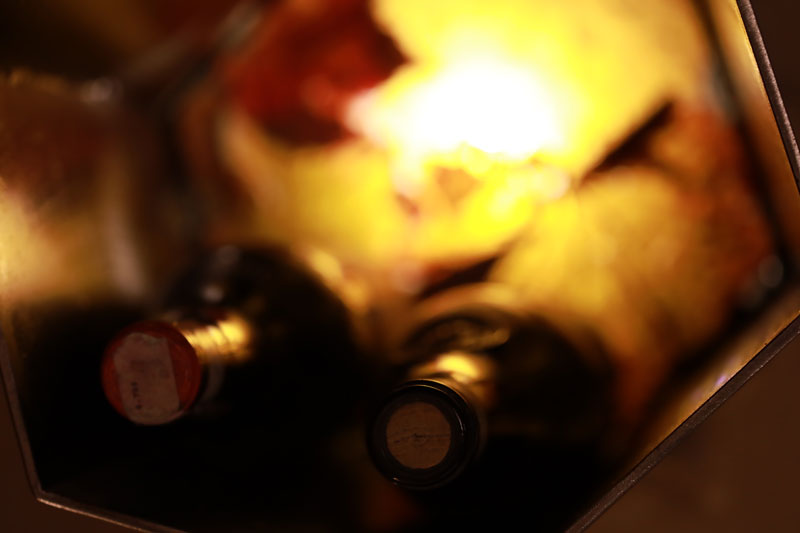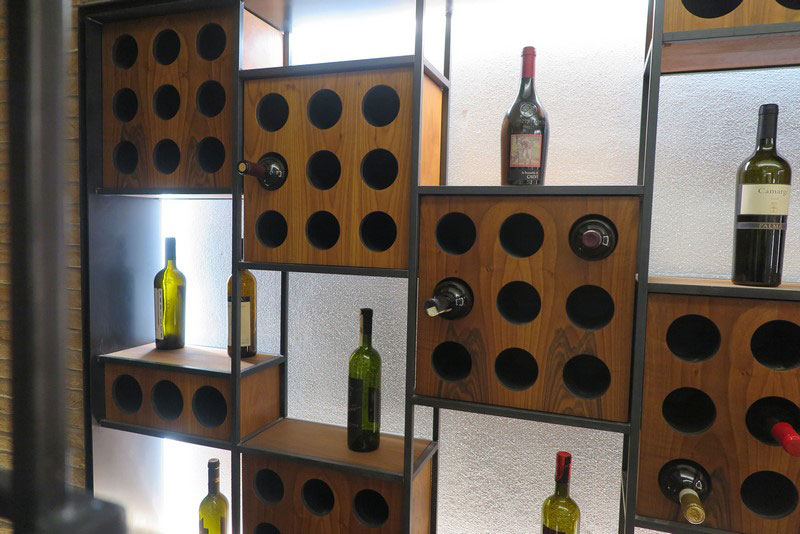start your project
The wine cellar
Creating the ideal home wine cellar: Winest's design excellence
Transforming wine into emotion: the art of wine cellar design


At Winest, our goal is to create the ideal wine cellar, paying meticulous attention to every detail. We believe that a wine cellar should not only store your collection but also be a place where wine transforms into emotion. Each cellar we design and build is a reflection of our clients' taste while adhering to the functional criteria required for proper wine storage.
Achieving the ideal wine cellar requires the harmonious coexistence of two complementary principles. The first is an objective principle, ensuring compliance with parameters and rules for bottle preservation. The second is subjective, focusing on comfort – your wine cellar should be a space tailored to you.
Achieving the ideal wine cellar requires the harmonious coexistence of two complementary principles. The first is an objective principle, ensuring compliance with parameters and rules for bottle preservation. The second is subjective, focusing on comfort – your wine cellar should be a space tailored to you.
We do build your perfect wine cellar
Ideal humidity in the wine cellar
The ideal relative humidity value of the cellar should be between 70 and 80-85%. In a dry environment the cork will tend to shrink, allowing the wine to come into contact with the air, causing oxidation; in the flat bottle the cork remains in contact with the wine, which keeps it moist and elastic, with better adherence to the neck of the bottle.
Lying like this, the bottle removes the air bubble that is normally found between the cork and the wine and the absence of oxygen reduces the possible development of bacteria that may be present in the cork. The materials and techniques used must ensure that the cellar can "feed" on the humidity transmitted naturally from the subsoil, appropriately regulated.
The ideal relative humidity value of the cellar should be between 70 and 80-85%. In a dry environment the cork will tend to shrink, allowing the wine to come into contact with the air, causing oxidation; in the flat bottle the cork remains in contact with the wine, which keeps it moist and elastic, with better adherence to the neck of the bottle.
Lying like this, the bottle removes the air bubble that is normally found between the cork and the wine and the absence of oxygen reduces the possible development of bacteria that may be present in the cork. The materials and techniques used must ensure that the cellar can "feed" on the humidity transmitted naturally from the subsoil, appropriately regulated.
Ideal cellar temperature
It’s a priority to keep the room temperature as constant as possible: above 10 °, but not over 18 °. The optimum temperature is around 10-12 ° for white wines and 12-15 ° for red wines. Too much heat favors the polymerization while cold boosts the precipitation of polyphenols: because of the abrupt alternation of the two processes these substances do tend to deposit in quantity, depleting the wine.
High temperatures accelerate the evolution of wine and cause its premature aging, compromising its quality (over 25 ° many volatile components can irreparably deteriorate). High temperatures can also cause dilation, with an increase in volume that can lead to the wine coming out or causing skip the cap. Since the cold air is heavier, it is possible to find a thermal difference between the floor and the ceiling: we will therefore arrange the white and sparkling wines at the lowest altitudes, rising with the rosés, red wines and, higher up, the important reds.
It’s a priority to keep the room temperature as constant as possible: above 10 °, but not over 18 °. The optimum temperature is around 10-12 ° for white wines and 12-15 ° for red wines. Too much heat favors the polymerization while cold boosts the precipitation of polyphenols: because of the abrupt alternation of the two processes these substances do tend to deposit in quantity, depleting the wine.
High temperatures accelerate the evolution of wine and cause its premature aging, compromising its quality (over 25 ° many volatile components can irreparably deteriorate). High temperatures can also cause dilation, with an increase in volume that can lead to the wine coming out or causing skip the cap. Since the cold air is heavier, it is possible to find a thermal difference between the floor and the ceiling: we will therefore arrange the white and sparkling wines at the lowest altitudes, rising with the rosés, red wines and, higher up, the important reds.
Ideal cellar light
The cellar must be dark. Exposure to natural or fluorescent light acts as a trigger for oxidative processes; wines exposed directly to sunlight will undergo through a rapid degradation, due to the rise in temperatures. Therefore, the average lighting value of the cellar should not exceed 250/300 lux.
The cellar must be dark. Exposure to natural or fluorescent light acts as a trigger for oxidative processes; wines exposed directly to sunlight will undergo through a rapid degradation, due to the rise in temperatures. Therefore, the average lighting value of the cellar should not exceed 250/300 lux.
Vibrations in the cellar
It’s very important not to shake the bottles, but rather to protect them from any vibration that could stress the cap, reducing its elasticity and thus favoring the penetration of air, a cause of oxidation and a possible harbinger of bacterial contamination.
Furthermore, any sediments could be kept in suspension by the continuous movements. For example, it is a good norm to keep washing machines far from the cellar. If the building is close to roads with heavy traffic / public transport, we will find suitable solutions to "suspend" the bottle collectors with special anti-vibration joints.
It’s very important not to shake the bottles, but rather to protect them from any vibration that could stress the cap, reducing its elasticity and thus favoring the penetration of air, a cause of oxidation and a possible harbinger of bacterial contamination.
Furthermore, any sediments could be kept in suspension by the continuous movements. For example, it is a good norm to keep washing machines far from the cellar. If the building is close to roads with heavy traffic / public transport, we will find suitable solutions to "suspend" the bottle collectors with special anti-vibration joints.
Smell in the cellar
To best preserve the wine, the environment must be well ventilated and protected from strong smells, both of chemical origin (paint, petrol, exhaust car) and natural (cheeses, salami, onions, truffles). These odors, through the cork, could contaminate the wine: a good ventilation, in addition to limiting smells, counteracts the formation of mold and fungi that could pollute the cork and, subsequently, the wine in the bottle.
To best preserve the wine, the environment must be well ventilated and protected from strong smells, both of chemical origin (paint, petrol, exhaust car) and natural (cheeses, salami, onions, truffles). These odors, through the cork, could contaminate the wine: a good ventilation, in addition to limiting smells, counteracts the formation of mold and fungi that could pollute the cork and, subsequently, the wine in the bottle.
At Winest, we understand that the ideal wine cellar is a combination of art and science. Contact us today to explore our home wine cellar design solutions and modern wine racks, tailored to your unique taste and requirements. Let us transform your wine storage into an unforgettable experience.
Create your cellar